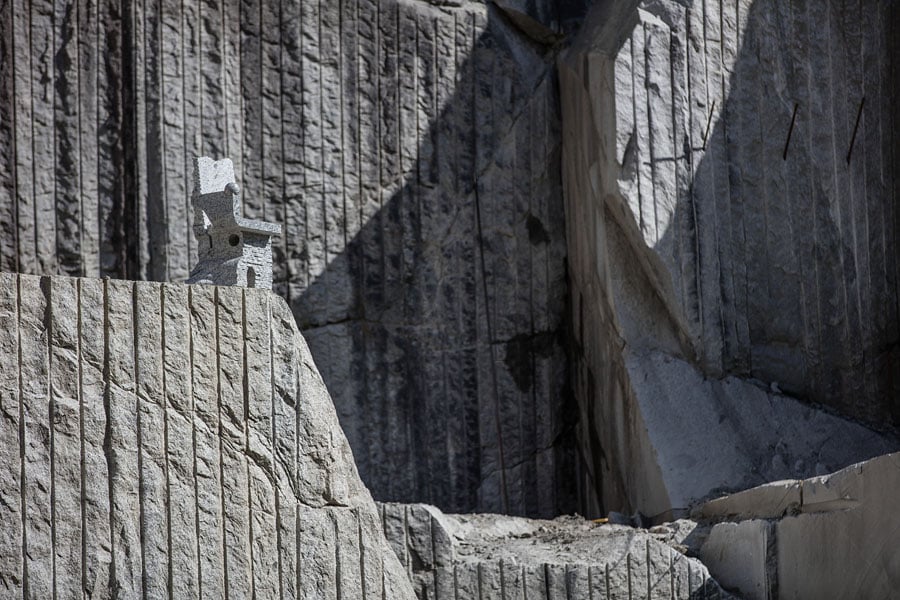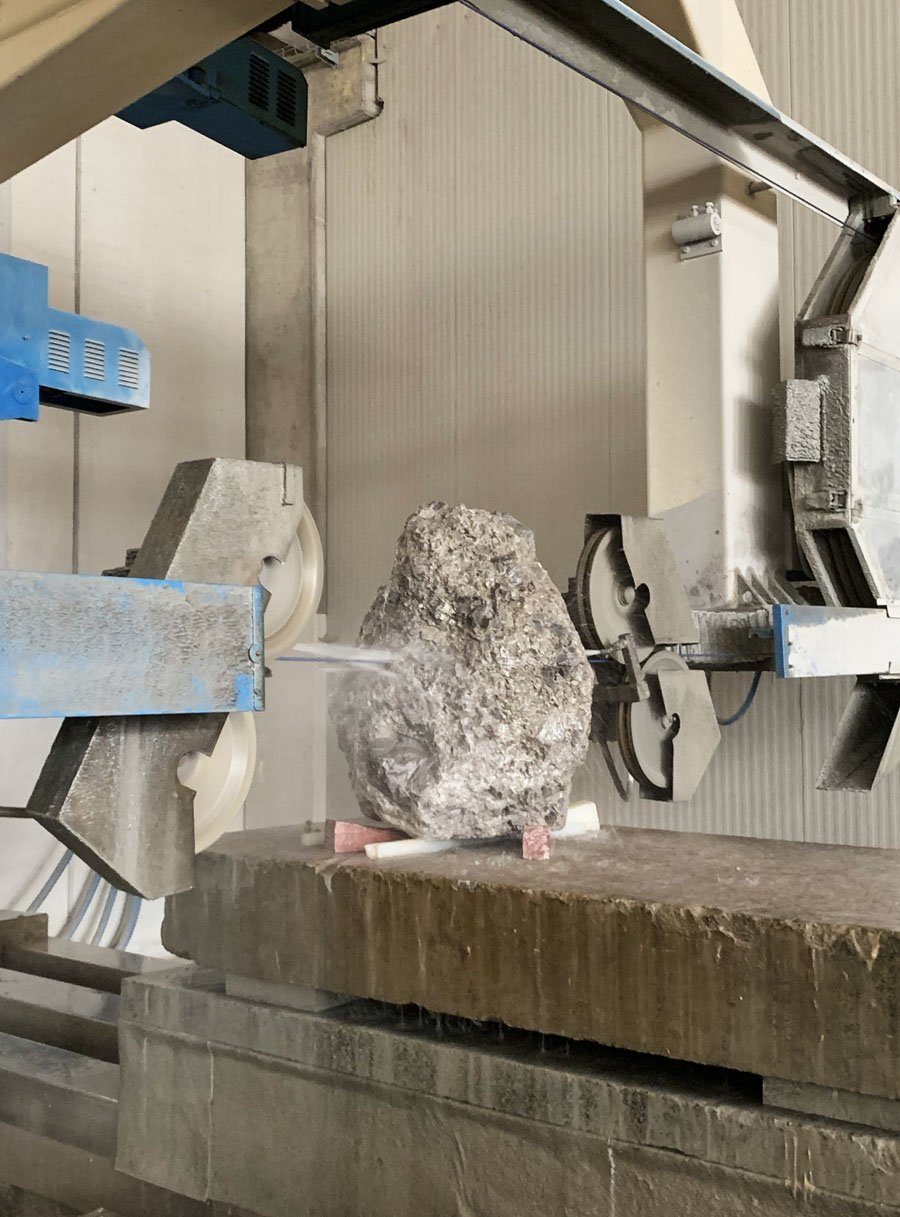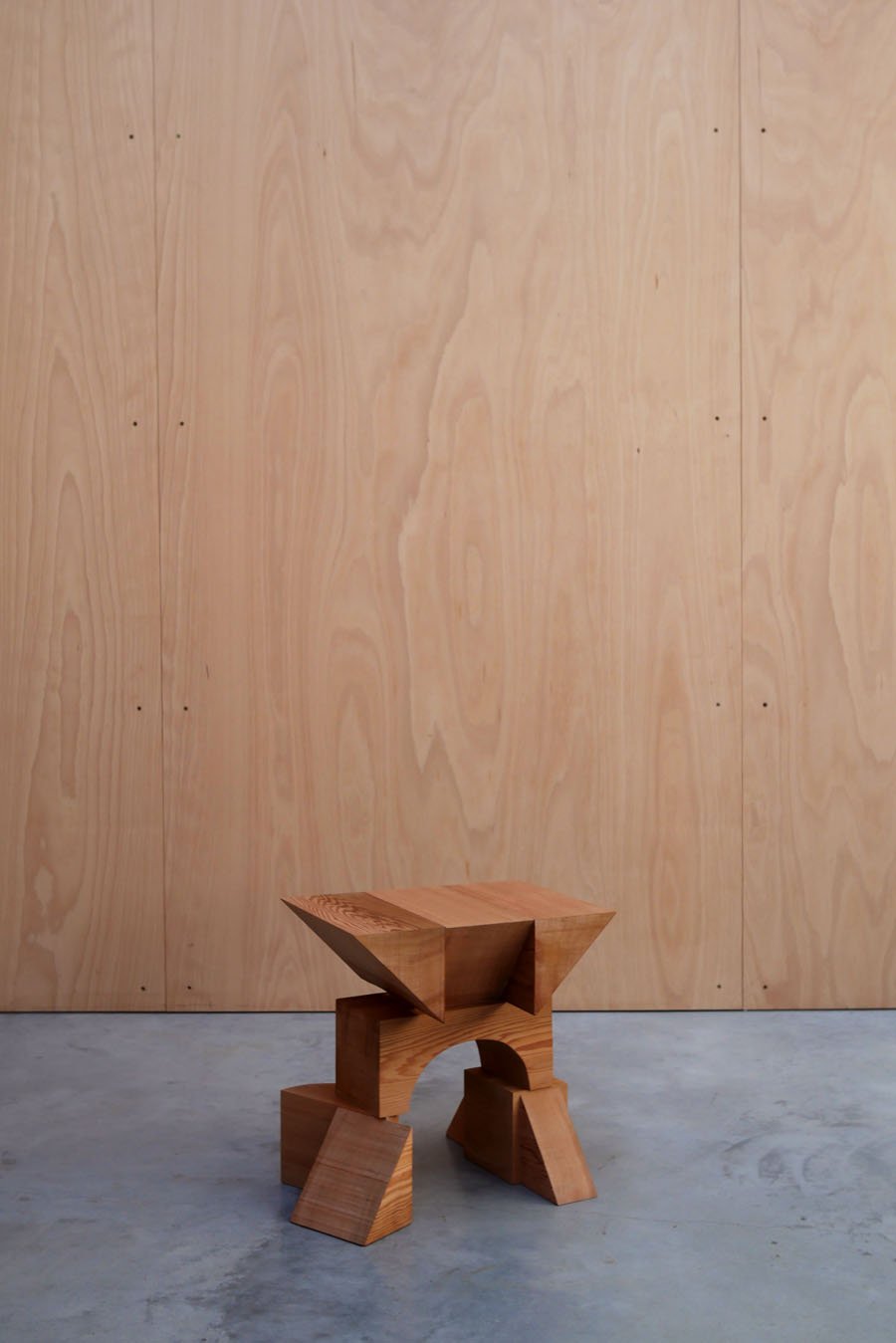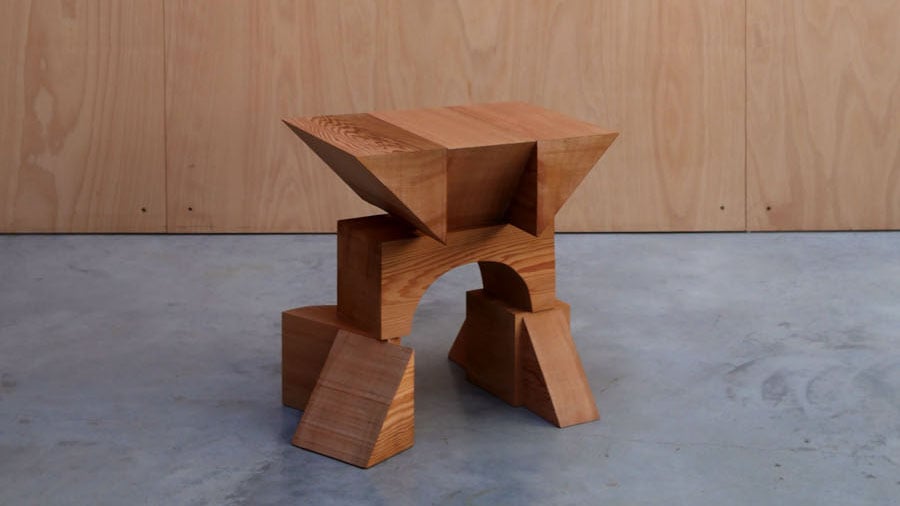
July 12, 2021
Brecht Wright Gander on Max Lamb
The designer reflects on Wood, Stone, the British furniture designer’s third solo show at New York’s Salon 94.

You may have seen the video of Max Lamb at the beach: the day is sopping, the sky is a unified cloud, and dusky waves lap in the background as the designer digs in the sand. His motions flicker in lapsed time as he uses a shovel to flatten a mound. He incises a pattern in the mound and pours in a silver liquid. Then he briefly disappears. When he reappears, he digs again until a triangular lattice emerges. Three legs taper down from the corners, gleaming dully. Behold Pewter Stool (2006), made in a way that Max Lamb, and nobody but Max Lamb, makes a stool. Why not? It seems to have taken less than an afternoon and required little to no traditional skill. Pewter Stool revises the hackneyed complaint against Modern art: “but I could do that” into a revelatory affirmation: “I could do that!”
Lamb’s practice braids together poetic primitivism and didactic documentation. He has made production into performance, process into product, and has opened a portal between DIY hobbyists and high-design professionals. In fact, project descriptions he writes to accompany his designs often resemble do-it-yourself guidance: “The 1kg pewter ingots, made by Geoff at Carn Metals in Pendeen, took about 10- 15 minutes to melt at 236ºC in two of my Mum’s old stainless-steel saucepans.”
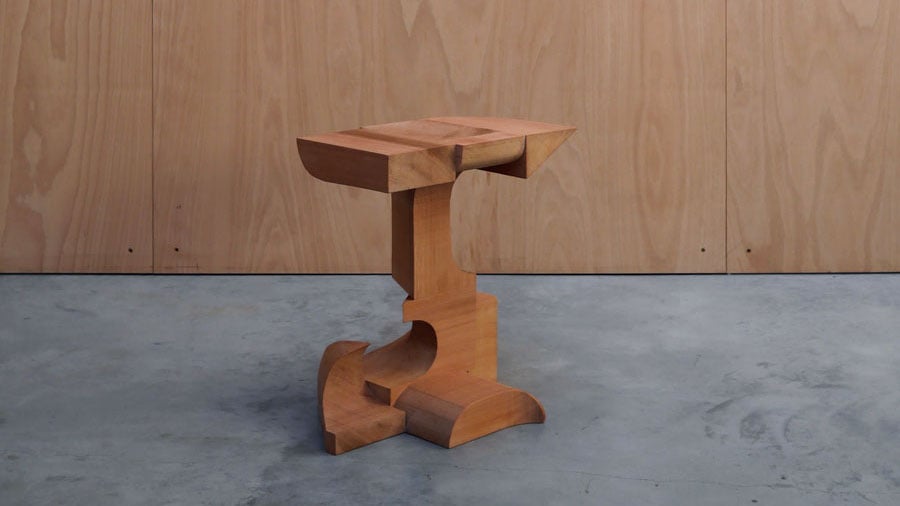
His video documentation is at pains to appear unstaged—he carries on preparatory conversations onscreen, people stop by and watch him work, the weather at the beach will be precisely what weather should not look like on the beach on Instagram, and he generally avoids fussy social media styling. Lamb’s earnestness is meticulously refined and more complex than a simple impulse towards “transparency.” His performative making blends alienation from and immersion in craft.
In Wood, Stone, Lamb’s third solo show at New York’s Salon 94, he again uses mono-material palettes and highly compressed production processes to create a tight narrative focus. A seating series in Western Red Cedar names each piece after the dimension of the single boards used to construct it (the 6 x 8” Chair is made from a 6’ x 8” board.) He allows no offcuts—the mate to every extracted cut is redeployed such that every dimensional inch is preserved. Economy has always been instinctive for Lamb, so working during the pandemic, when materials could only be obtained locally and sparingly, provided challenges almost tailor-suited to his talents.
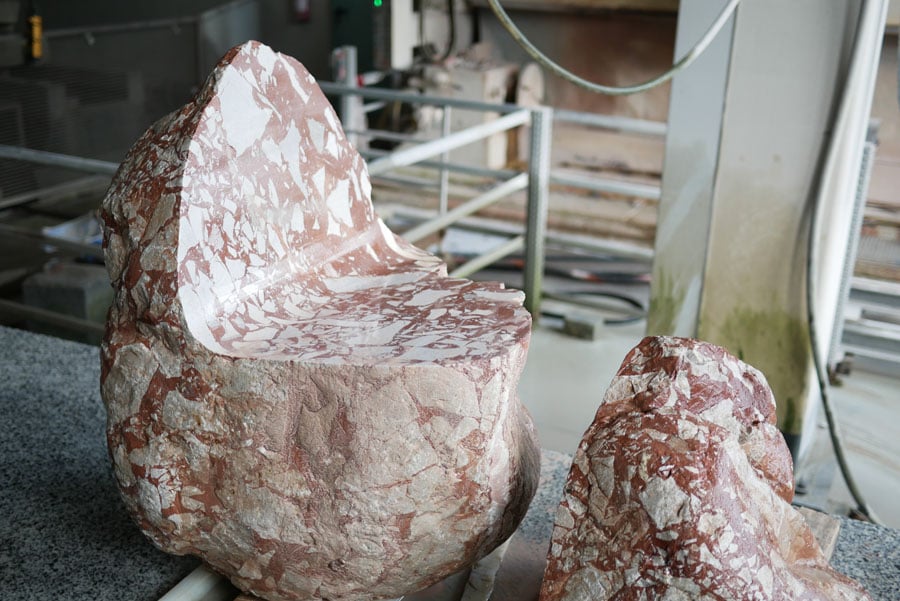
Through iteration, Lamb’s series becomes études—opportunities to explore the range of inflections available within a prescribed form. The real riddle Lamb seems to have solved, however, aside from how to make a chair from a single board, is how to be a professional neophyte, continually experiencing and sharing the excitement of fresh discovery. His graduation show at Royal College of the Arts, Exercises in Seating, has been the template for his improbable career—a trick he has managed by never ceasing to be a student.
If the pleasure of Lamb’s work lies in this sense of discovery, a potential limitation may be that Lamb seems disinclined to move beyond a first handshake with any given process. Instead, after a brief introduction, he is more likely to shift modes. Craft is typified by specialization and a brutal, tenacious struggle towards mastery. Lamb’s work reflects the opposite: the mastery of aestheticized amateurism. Yes, he hammered away at stones to make Boulder Chair—but a trained mason would perhaps say he’s barely begun. His chairs often look just chair-like enough to be figuratively identifiable.

Knowing when to stop is surely one of Lamb’s greatest strengths. In his latest wooden works, bandsaw marks are not sanded away. In his stone works, crenelated textures and tool markings are likewise preserved. There is also something speedy about his work. It brings the pulse of the internet to craft. (See Glenn Adamson’s Warp Factors: Craft at High Speed for more on this.) His designs often convey the hurried, in-process beauty of construction sites—when the bones and sinew of a building are uncovered, the internal systems are only partially in place, and the sculptural mystery and legible ingenuity of making are available to wonder.
The “Stone” portion of Wood, Stone includes Feather and Wedge (2021), a chair that is evidently hewn from a monolithic block of Tonalite Granite using the titular technique. Looking at it, one thinks the method might better have been called Smash and Wedge, but the entirely un-featherlike qualities of the roughly worked rock, formed like a Tetris-styled illustration of a chair, rub nicely against the incongruous name. Campione Chair (2016) is more eccentric in form, with little doorways and simple geometries excavated from the craggy surface, summoning the voice of the architect-sculptor Gonzalo Fonseca.

Although Lamb occasionally appropriates the language of Modernism when discussing his work—employing such tropes as the “honesty” of materials and the legibility of constructive methods—his angle of approach is less defined by dogma than by lingering attention towards the pleasures of thinking through making.
As global supply chains have been rattled fiercely by the pandemic, the production of things and the aspect of craft that invokes self-reliance and resourcefulness have all captured popular attention. COVID-19 mask making may have been the most massive participation of Americans in craft since WWII production efforts. Lamb’s work adds a note of sweetness to the anxieties brewing around these topics. Limitations can be deeply inhibitive, but artists are also continually fashioning them into scaffolds for innovation. Just look at what Lamb can do with a single 6’x8” board or a single block of stone.
You may also enjoy “Can Craft Save America?”
Would you like to comment on this article? Send your thoughts to: [email protected]
Register here for Metropolis’s Think Tank Thursdays and hear what leading firms across North America are thinking and working on today.




